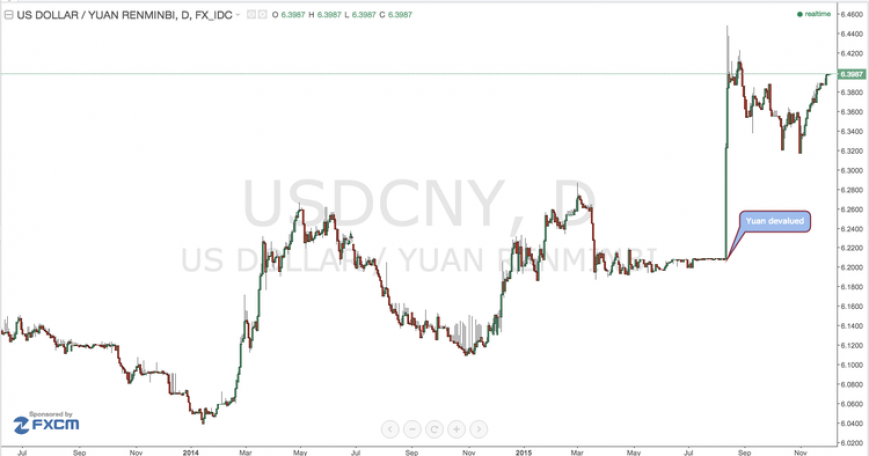Yuan joining the IMFs basket of reserve currencies bullish for bitcoin
The Chinese Renminbi has been approved by the IMF for inclusion in the basket of currencies that make up Special Drawing Rights (SDRs). The other currencies include the US Dollar, the English Pound, the Japanese Yen and the Euro.
To facilitate the IMF’s main goal of ensuring the stability of the international monetary and financial system, the Fund maintains a currency reservoir. When joining the agency, each country is assigned an initial quota, based broadly on its relative position in the world economy. Quotas are denominated in Special Drawing Rights (SDRs), the IMF’s unit of account.
The Chinese Renminbi has now been approved by the IMF for inclusion in the basket of currencies that make up SDRs. What is most surprising about this move is that the Yuan now makes up more of the basket (10.92%) than the Yen (8.33%) and the Pound (8.09%).
“The Executive Board’s decision to include the RMB in the SDR basket is an important milestone in the integration of the Chinese economy into the global financial system. It is also a recognition of the progress that the Chinese authorities have made in the past years in reforming China’s monetary and financial systems. The continuation and deepening of these efforts will bring about a more robust international monetary and financial system, which in turn will support the growth and stability of China and the global economy.”
— – Ms. Christine Lagarde, Managing Director of the IMF
In order to get the yuan included, China has addressed a variety of structural reforms, such as permitting more flexibility in interest rate settings, gradually opening up the capital account, and establishing a new budget law.
China has also had to devalue the yuan (vs USD) as well as cut interest rates (6 times), in order to promote economic stability as it transitions from an export driven economy to a consumer led economy.
Every five years, the IMF reviews the status of currencies within the SDR and opens up a window for inclusion of additional currencies. The SDR basket previously comprised four currencies, that are issued by members whose exports of goods and services had the largest value over a five-year period, and have been determined by the Fund to be "freely usable."
“The concept of a freely usable currency concerns the actual international use and trading of currencies, and it is distinct from whether a currency is either freely floating or fully convertible. In other words, a currency can be widely used and widely traded even if it is subject to some capital account restrictions.”
— – Siddharth Tiwari, Director of the IMF’s Strategy, Policy, and Review Department
China’s central bank allows the yuan to float in a very tight predetermined ranged versus the USD. On August 11th, as the chart below shows, China allowed the yuan to depreciate as part of ongoing efforts of monetary reforms and easing, to help cussion an economic slowdown. This triggered an even sharper selloff in the yuan as global investors started to worry about a Chinese meltdown, which has not come to fruition.
Supporting the yuan by keeping it in a narrow band has cost the Chinese greatly in foreign exchange reserves, and has become unsustainable policy moving forward as China seeks to open up and become a global power.
Bank of America’s Richard Woo made a bold prediction on Friday: "After the SDR they no longer have the incentive to prop up the renminbi," he said in an interview in Taipei. "A December hike by the Fed would give the Chinese a perfect excuse to let the renminbi go because they can make a strong case that they need to decouple their monetary policy from that of the U.S."
China’s foreign exchange reserves fell by a record $93.9 billion in August as the central bank spent heavily to support its currency’s exchange rate. Reserves declined to $3.557 trillion as of the end of August, according to the People’s Bank of China. They remain by far the world’s largest despite August’s fall.
"The slowdown has also dimmed investor enthusiasm for the yuan. Mr. Zhou of Bin Yuan Capital said the yuan is overvalued by about 20% and keeping it at the current level would only hurt the economy. In a Nov. 19 report, Goldman Sachs Group Inc. listed a ‘significant depreciation’ of the yuan as the biggest risk facing emerging-market assets next year. A drop could help China’s export sector but raise new criticism from the U.S. and elsewhere that Beijing is playing politics with its currency."
— – MarketWatch
Regardless of whether the yuan is overvalued, or will be let go from its informal peg, it is clear that the Chinese are moving in the direction of letting the yuan float freer. This effects onshore yuan holders dramatically and as the currency is less controlled by the Government, market forces will determine its true value. It’s time to expect further weakening of the renminbi vs USD.
The Chinese authorities have instituted capital controls in an effort to stem the flow of money leaving the mainland. One of the ways the Chinese have been able to avoid these controls and get their money/assets offshore and out of yuan has been through bitcoin. Expect for this to continue, particularly as the yuan begins its depreciation vs USD, and the purchasing power of the average citizen and the super rich begins to erode.
China has led the bitcoin market both higher and lower, and continues to lead the market. Therefore any policies coming out of China should be watched closely and followed; particularly those that affect the people’s ability to move capital freely. Anything that depreciates the onshore yuan (like an increasingly free floating currency vs USD), should cause Chinese investors to move assets into vehicles that get their money offshore. If the bitcoin price begins to climb as a result, speculators will pile in as well.

Don’t miss out – Find out more today

 “The concept of a freely usable currency concerns the actual international use and trading of currencies, and it is distinct from whether a currency is either freely floating or fully convertible. In other words, a currency can be widely used and widely traded even if it is subject to some capital account restrictions.”
“The concept of a freely usable currency concerns the actual international use and trading of currencies, and it is distinct from whether a currency is either freely floating or fully convertible. In other words, a currency can be widely used and widely traded even if it is subject to some capital account restrictions.”


